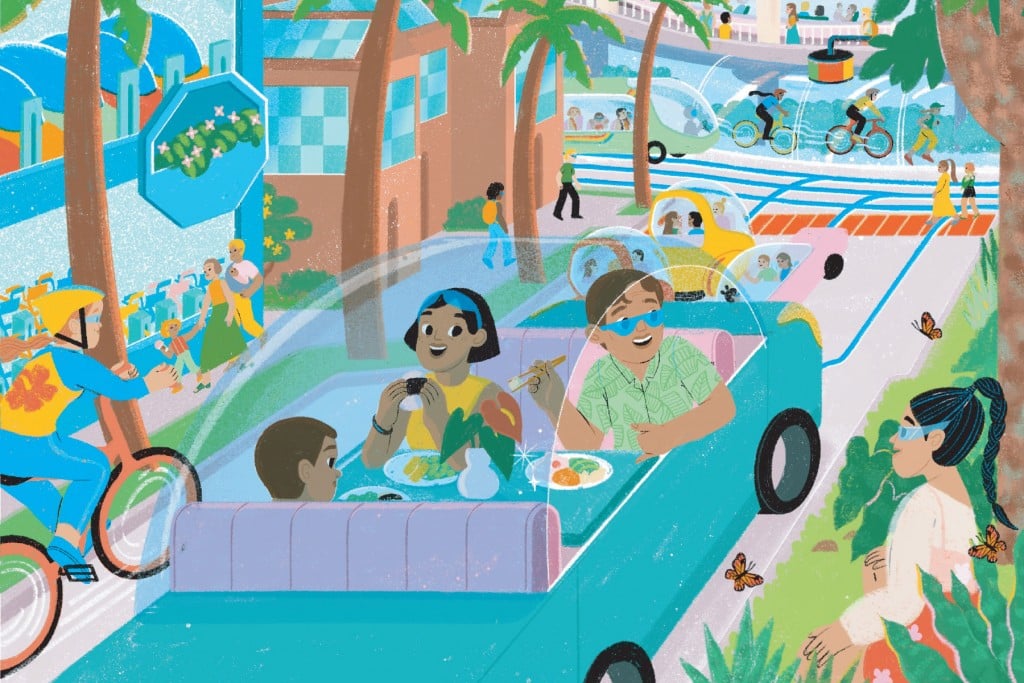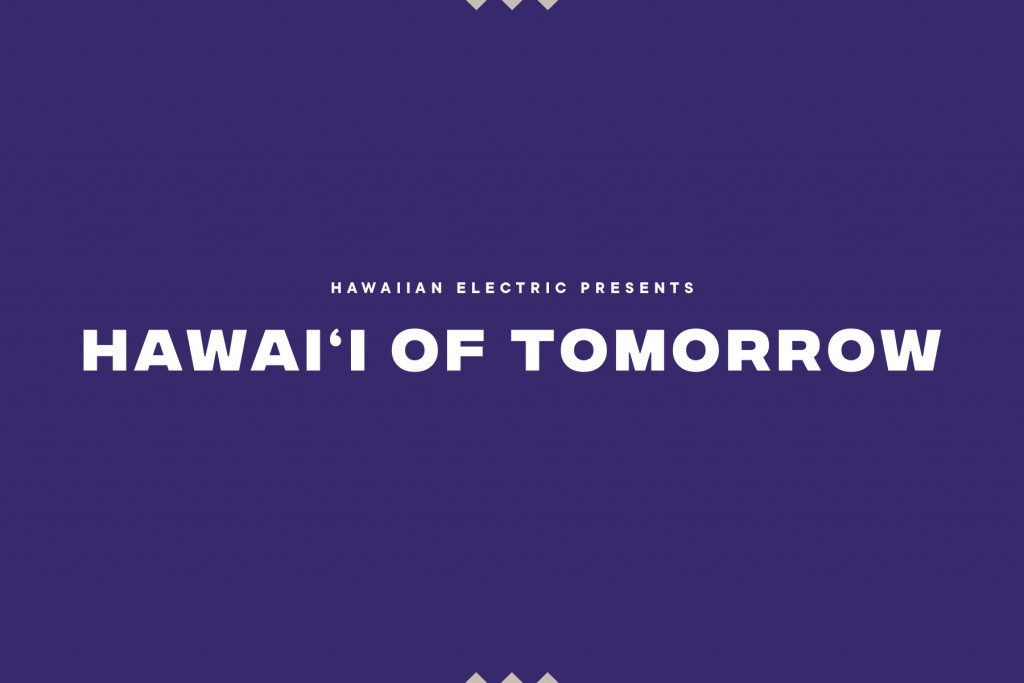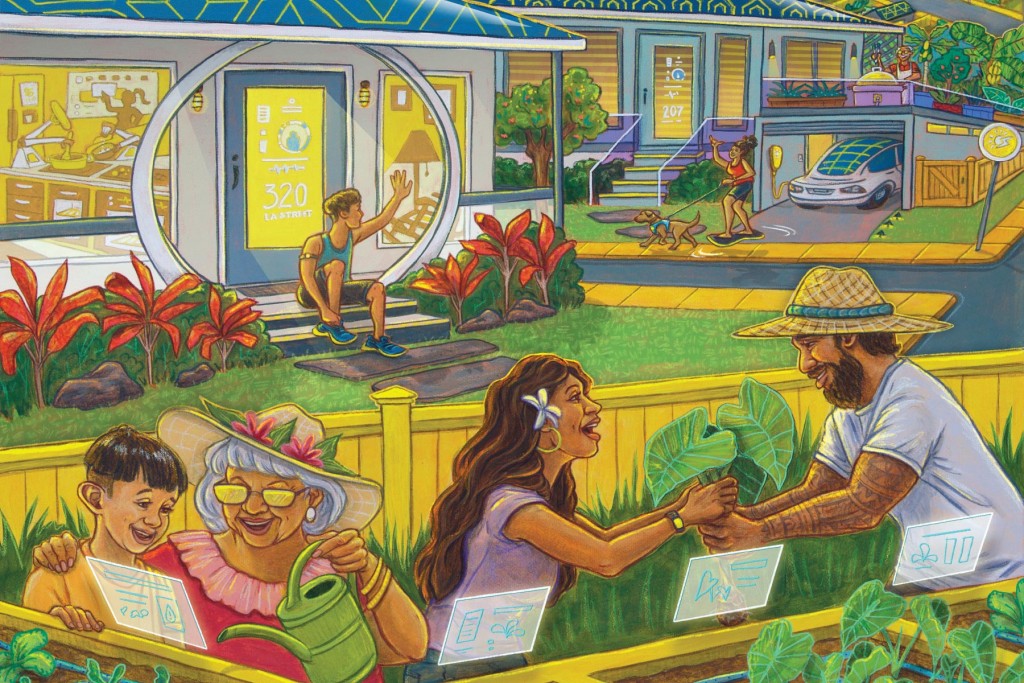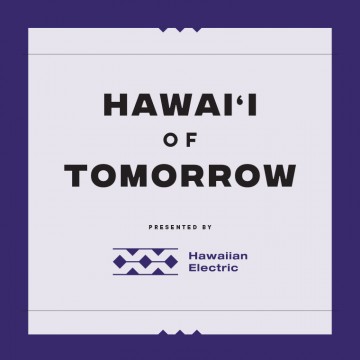Food Powered by ʻĀina
Native Hawaiian self-reliance provides a template for imagining a future of innovative stewardship of our natural resources in part two of Hawaiʻi of Tomorrow, a six-part series presented by Hawaiian Electric.
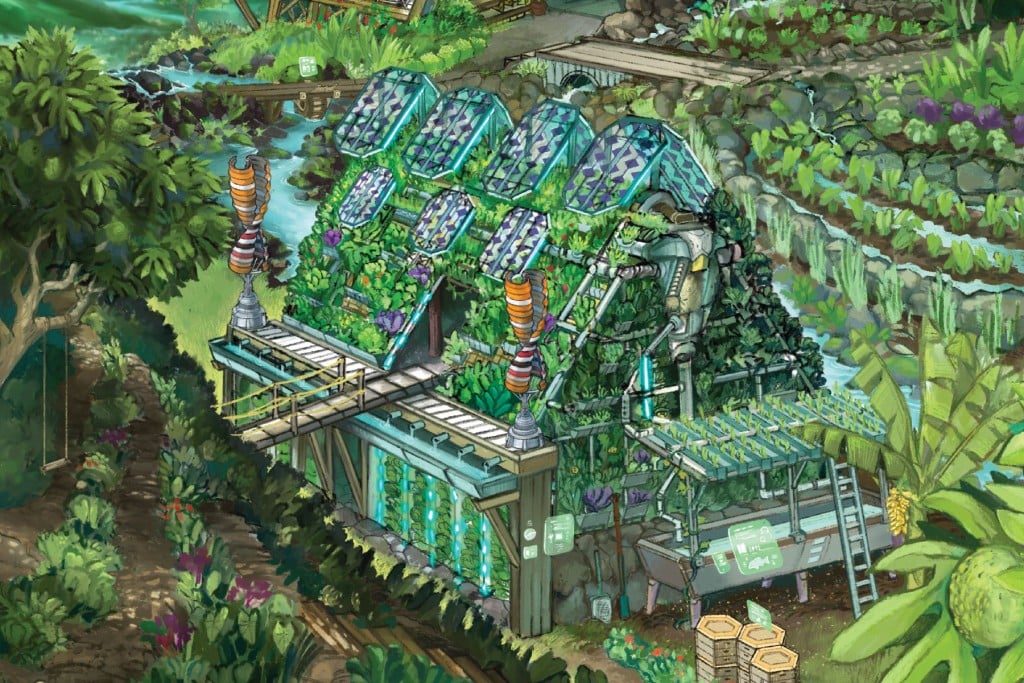
As the designated konohiki walks upstream from fishpond to farm, his field tablet pings at regular intervals. ‘O‘opu populations in Zone 6, it tells him, have officially tripled since the return of the ahupua‘a’s natural water flows.
Community scientists from seven countries, participating in the university’s prestigious climate resilience fellowship, follow along with mud under their fingernails, eager to learn more from the ecosystem manager.
He tells them how the sluice gates separating the ‘auwai, arterial valves in the vast circulatory system of agricultural waterways, revolutionized Hawai‘i in the 13th century, an innovation by the chief Mā‘ilikūkahi to cordon waterborne plant diseases and even grow fish within the irrigation system. In 2050, these mākāhā are now solar-automated, he says, and regulate water usage to exactly what each plant needs, no more.
The valley, in turn, bursts with food. Patches of kabocha, sweet potatoes, carrots and lettuce radiate from the banks of the lo‘i kalo. A multicolored canopy of fruit crowns the agroforest, pulling clouds towards the hillside with their leaves and healing abused soil with their nitrogen-fixing roots.

Lupe: Solar kites collect and correlate wind, rain, solar, and lunar crop data to inform when and where to plant.
Smart solar panels dotting the variegated fields adjust their opacity along the sun’s path, optimizing shade to what the plants beneath them liked best. Any excess power is sold to the island’s power grid. The extra income is reinvested into crop innovation and productivity.
The same technology panels the facades of the farm’s kauhale — greenhouses that nurture vast solar-powered aquaponic systems of delicate plants and seedlings. Inside, the konohiki observes the farmed fish that enrich the closed water loop within. He nets a 4-pound adult to cook for his visitors, plucks enough green onions and fern shoots for lunch, and gives thanks to his kūpuna.
 Wooden Wave
Wooden Wave
Artist of “Food Powered by ‘Āina”
Matthew Kawika Ortiz and Roxanne Ortiz are a husband-and-wife creative duo who paint under the name Wooden Wave. They draw upon Hawaiian values and concepts to present them in a contemporary context. With conscious attention to detail, their work invites viewers to imagine alternative realities to our current society and environment. They meld elements of the natural world with technology (both, modern and ancestral) to create narratives around mālama ‘āina values. Best known for their large-scale murals depicting sustainable treehouses, Wooden Wave presents a playful perspective that brings hope and joy to those who view their art.
Hawaii Business Magazine, in partnership with Hawaiian Electric, summons the optimistic spirit of practical imagination to think about what Hawai‘i would look like in 2050, with special consideration on the challenges of the coming decades in this six-part series titled Hawaiʻi of Tomorrow. Click any title below to explore this series!
 Part 1: The Tranquility of Transportation
Part 1: The Tranquility of Transportation
Join Hawaiian Electric in imagining a future when nights are filled only with the sounds of leaves rustled by tradewinds… read more.
 Part 2: Food Powered by ʻĀina
Part 2: Food Powered by ʻĀina
Native Hawaiian self-reliance provides a template for imagining a future of innovative stewardship of our natural resources in part two of Hawaiʻi of Tomorrow, a six-part series presented by Hawaiian Electric… read more.



